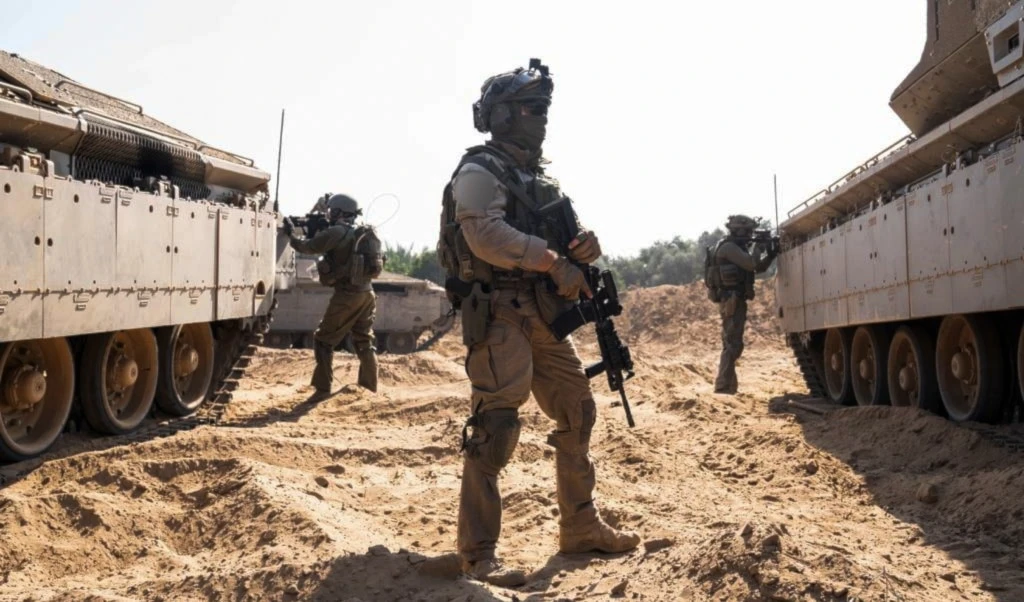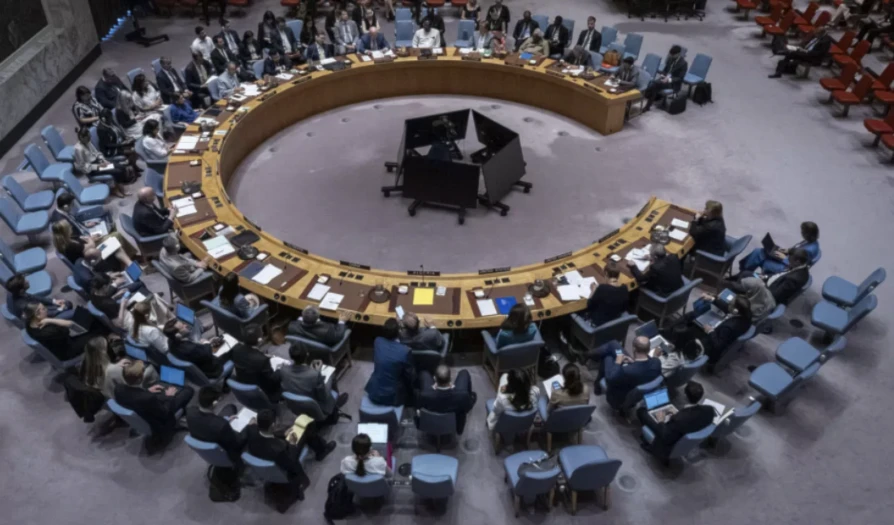What Israeli-made famine has done to Gaza's children: NYT
Doctors warn Gaza’s youngest face stunted growth, organ damage, and deadly infections as Israeli seige and relentless bombings hinder life-saving treatment.
-

Palestinian mother Samah Matar poses for a photo with her son Yousef, 6, who suffers from malnutrition and cerebral palsy amid the ongoing Israeli genocide in Gaza, at a UN-run school in Gaza City, Saturday, July 26, 2025. (AP)
In The New York Times, reporter Stephanie Nolen explains that health workers often use a simple but vital tool to detect malnutrition in young children: a measuring tape. For most two-year-olds, the upper arm measures about six inches (15.2 cm), made up of bone, muscle, and fat. When the circumference drops below 4.5 inches (11.4 cm) in children under five, she writes, it signals severe malnutrition, the point at which the body, having burned through fat reserves, begins consuming muscle and bone.
This case of severe malnutrition is evident in the Gaza Strip undergoing genocide by the Israeli occupation. Just earlier, Al Mayadeen’s correspondent reported that four fetuses and three premature babies have died at Nasser Medical Complex in Gaza due to severe malnutrition, highlighting the devastating toll the ongoing blockade and war are taking on the enclave’s youngest and most vulnerable residents.
The Gaza Strip, where “Israel” has restricted aid during the ongoing genocide, is facing extreme levels of malnutrition. In July, a UN-backed panel of food security experts declared Gaza City officially under famine, reporting that 16% of children screened were malnourished.
Even those who survive severe malnutrition may carry lifelong consequences: stunted growth, weakened bones, liver and kidney damage, cognitive impairments, and heightened risks of stroke, diabetes, and heart disease later in life.
Israeli officials have downplayed these concerns. Prime Minister Benjamin Netanyahu’s office called the famine declaration “an outright lie.”
Breaking from the inside: How hunger devours Gaza’s young
As a foreign correspondent covering global health, Nolen has witnessed acute malnutrition in many settings, from wars and displacement camps to drought-stricken regions of East Africa and central India, where social factors such as caste and gender discrimination exacerbate chronic undernutrition.
“For a child, food is not just energy for the day at hand, but the essential building block for a life ahead, needed for the development of muscle, bone, and brain,” she notes.
Treatment centers for malnourished children are marked by an eerie silence. Many are too weak to cry, staring blankly at caregivers. Some remain motionless or refuse food and drink because eating itself consumes energy they no longer have.
In the most severe cases, children’s bodies begin breaking down vital organs to survive. Their immune systems collapse, leaving them dangerously vulnerable to disease. Even minor infections can become fatal, and wounds or rashes may not heal.
Challenges of treatment
Treating these children is complex. They cannot simply be given a hot meal. Instead, they require specially formulated, high-energy therapeutic foods that their bodies can absorb, administered in carefully measured amounts.
Food and other essential supplies began slowly trickling into Gaza this summer after months of blockade by “Israel,” slightly easing the hunger that had gripped the enclave’s two million residents by late July.
Despite partial relief, food shortages remain widespread. With the Israeli occupation forces poised to invade and then occupy Gaza City, medical workers face mounting challenges in delivering the careful, intensive care these children need to survive and recover.

 3 Min Read
3 Min Read










